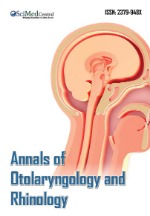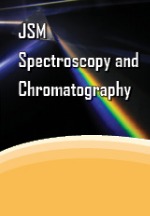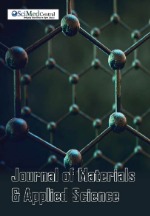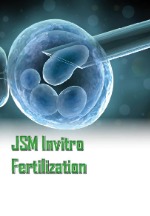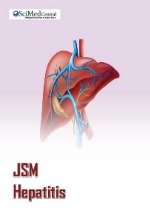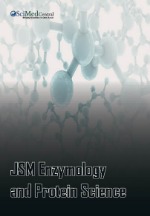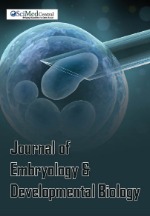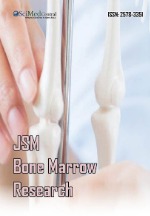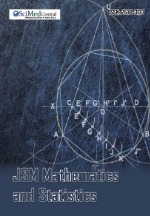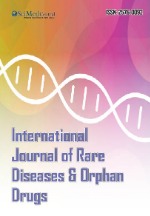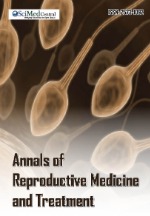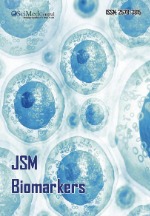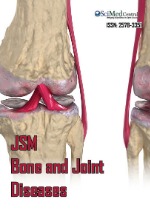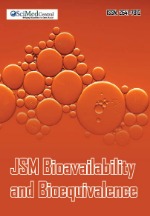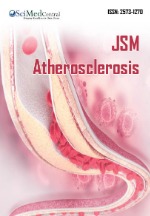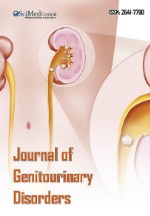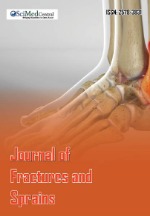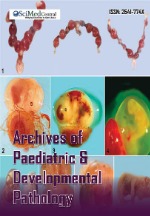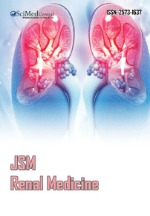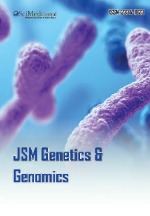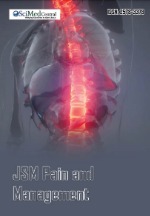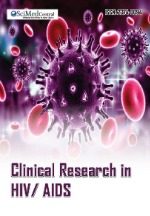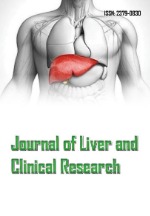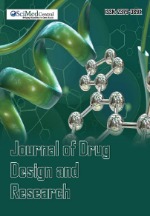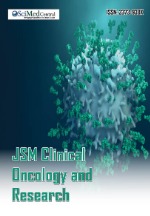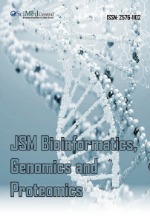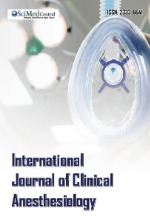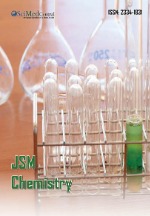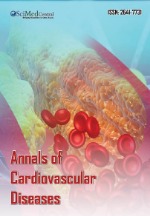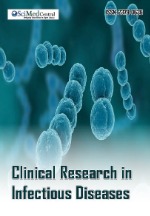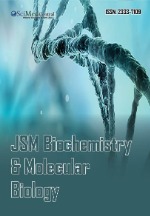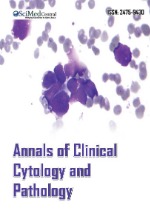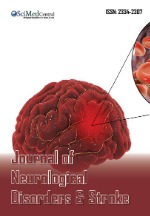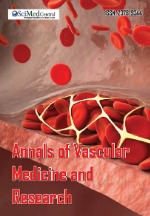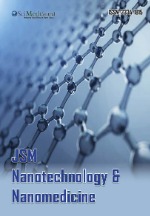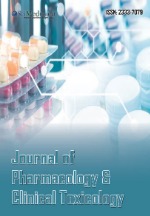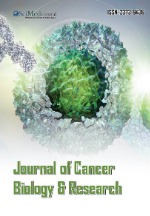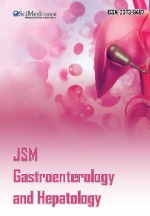Abiraterone Acetate Inhibits Invasion and Metastasis of Adrenocortical Carcinoma Cells through EFNA3
- 1. Third Hospital of Shanxi Medical University, Shanxi Bethune Hospital, Shanxi Academy of Medical Sciences Tongji Shanxi Hospital, China
- 2. Department of Urology, Shanxi Bethune Hospital, Shanxi Academy of Medical Science, China
- #. These authors contributed equally to this work
Abstract
Background: Adrenocortical carcinoma (ACC), is an uncommon and highly aggressive malignant tumor with endocrine functions, typically associated with adverse clinical outcomes. Mitotane is the only drug currently available; however, it has poor efficacy and several side effects. Abiraterone, a CYP17A1 inhibitor, has been widely used to treat desmoplasia-resistant prostate cancer; however, its antitumor activity in ACC remains unknown.
Objective: To examine the potential inhibitory effects of abiraterone acetate on the malignant progression of ACC.
Methods: The ACC cell line NCI-H295R was used to evaluate the cytotoxic effects of abiraterone acetate. We determined the IC50 using the CCK8 assay. Apoptotic activity and cell cycle dynamics were evaluated through flow cytometry. Cell growth was assessed with a colony formation assay. Invasive and migratory abilities were assessed using a Transwell assay. Next-generation sequencing (NGS) was followed by drug-regulated gene ontology and Kyoto Encyclopedia of Genes and Genomes analyses. EFNA3 expression was manipulated using plasmid overexpression and lentiviral knockdown.
Results: Abiraterone acetate inhibited ACC cell viability, migration, and invasion and induced apoptosis and G2/M phase blockade in ACC cells. Bioinformatic analysis revealed that EFNA3, a critical determinant in the regulation of cell migration and invasion, was significantly downregulated in abiraterone-treated ACC cells. EFNA3 overexpression partially reversed the inhibitory effects of abiraterone on cell migration and invasion, whereas EFNA3 knockdown abrogated these effects.
Conclusion: Abiraterone acetate inhibited the malignant behavior of ACC in vitro. EFNA3 mediates the anti-invasion and anti-metastatic effects of abiraterone acetate in ACC cells.
KEYWORDS
- Abiraterone acetate
- Adrenocortical carcinoma
- EFNA3
CITATION
Zhang K, Tai Y, Gong Y, Zhou Y, Wang C, et al. (2025) Abiraterone Acetate Inhibits Invasion and Metastasis of Adrenocortical Carcinoma Cells through EFNA3. Ann Clin Exp Hypertension 9(1): 1064.
INTRODUCTION
Adrenocortical carcinoma (ACC), a rare endocrine malignant tumor, has an annual incidence of 0.5–2.0 per million people. It is characterized by strong aggressiveness, poor prognosis, and high mortality [1]. For patients with ACC without distant metastases (stages I–III), the only possible cure is radical surgical resection; however, the postoperative recurrence rate is high (50–70%) [2]. Clinically, the main manifestations of ACC are signs and symptoms of increased steroid hormone secretion. Approximately one-third of patients present with atypical symptoms of abdominal or lower back pain due to tumor compression [3]. Cortisol overproduction in patients with ACC is an independent prognostic factor for shorter survival [4].
Mitotane remains the only pharmacological agent authorized by the United States Food and Drug Administration (FDA) for the management of patients diagnosed with advanced or inoperable ACC. however, monotherapy has low efficacy and significant adverse effects [5]. Mitotane is an adrenotoxic drug that primarily acts on the adrenal cortex, leading to impaired steroidogenesis and cell destruction. It selectively causes atrophy and necrosis of cells of the zona reticularis and zona fasciculata in the adrenal cortex. Therefore, it is accompanied by complications such as acute or chronic adrenal insufficiency [6]. The treatment regimen that is now generally recognized by clinical practitioners is a combination of mitotane, etoposide, doxorubicin, and cisplatin (EDP-M).Although advanced ACC presents with significant heterogeneity, the prognosis for affected patients continues to be poor [7].
A recent phase III clinical trial demonstrated that adjuvant treatment with mitotane for low-grade, localized ACC did not lead to significant improvements in recurrence-free survival or in the reduction of treatment-related toxicity [8]. Thus, the search for drugs with improved efficacy and fewer side effects is imminent. Abiraterone acetate, an antitumor drug that selectively and irreversibly inhibits 17-hydroxylase (CYP17A1) and 21-hydroxylase (CYP21A2), has demonstrated antitumor activity in ex vivo experiments [9]. Abiraterone acetate is extensively utilized in the management of metastatic, castration-resistant prostate cancer (mCRPC) [10]. Owing to its hormone-suppressive effects, abiraterone acetate has therapeutic benefits in advanced breast cancer [11].
We proposed the hypothesis that abiraterone acetate may modulate the endocrine activity of ACC. In this study, we systematically evaluated the cytotoxic effects of abiraterone acetate on NCI-H295R ACC cell lines.
METHODS
Materials and methods
Cell line: Human adrenocortical carcinoma cell line NCI-H295R was purchased from Wuhan Punosai Company and cultured according to the instructions. The cell-specific medium was purchased from Wuhan Punosai Company. Routine mycoplasma testing was conducted to confirm that the cell lines remained free of contamination. The cells were maintained in a controlled incubator environment set at 37°C with 5% CO2. Abiraterone acetate, sourced from MedChemExpress (Monmouth Junction, NJ, USA), was initially dissolved in dimethyl sulfoxide (DMSO) and then further diluted in Dulbecco’s Modified Eagle Medium (DMEM) to achieve the desired concentrations.
Cell viability assay: Cells were harvested and subsequently seeded into 96-well plates, 3×103 per well, and placed in the incubator overnight. After the cells adhered to the wall, the cells were exposed to abiraterone acetate (0.25-128 μM) for 4 days, while a control group of complete mediums without drug was set up. After a 4-day incubation period, 10 μL of CCK-8 solution was introduced into each well. The cells were then incubated for an additional 2 hours at 37°C to allow for the completion of the colorimetric assay. After the cells had been cultured for 2 h, the absorbance value was detected by an enzyme marker at 450 nm.
Apoptosis assay: NCI-H295R cells were treated with 0,33.67 μM abiraterone acetate for 4 days at 37°C. Cells from both the negative control and abiraterone acetate groups were harvested, subjected to 400g centrifugation at 4°C for 5 minutes. The cells were subsequently rinsed three times using pre-chilled PBS. Following this, the cells were resuspended in 200 μL of PBS. To each sample, 10 μL of both Annexin V-FITC and PI reagents were added simultaneously. The samples were then incubated at 4°C in the dark for 30 minutes to ensure proper staining. Then diluted by adding 300 μL of PBS and discontinuing the reaction, which was assayed by flow cytometry.
Cell cycle assays: NCI-H295R cells were treated with 0,33.67 μM abiraterone acetate for 4 days at 37°C. The cells of both groups were collected, and centrifuged at 400g for 5 minutes. The supernatant was discarded. Resuspended with PBS, fixed with anhydrous ethanol, and centrifuged again. The supernatant was carefully removed, and the cells were rinsed twice with PBS. Following this, the cells were resuspended in the PI/RNase staining buffer solution. The cells were then incubated at room temperature for 15 minutes before being analyzed by flow cytometry.
Transwell Detects Cell Migration and Invasion: NCI- H295R cells were treated with 0, 33.67 μM abiraterone acetate for 4 days at 37°C. Two groups of cells were collected, for the migration assay. 1×105 cells/mL were suspended in 1% FBS medium and inoculated into Transwell chambers. 0.5 mL of cell suspension was added to each chamber, and 0.75 mL of culture medium containing 10% FBS was added to the chambers in 24-well plates. After 24 hours of incubation at 37°C, non-migratory cells in the upper chamber were removed with a cotton swab. Migrated cells on the lower surface were fixed with 4% paraformaldehyde for 20 minutes at room temperature. Then it was stained with 0.5% crystal violet solution for 30 minutes, washed with PBS, and counted under a microscope. The steps of the invasion assay and migration assay were the same except that the upper chamber of the Transwell was precoated with Matrigel gel.
Cell clonogenicity assay: NCI-H295R cells were treated with 0, 33.67 μM abiraterone acetate for 4 days at 37°C. The cells of both groups were collected. The concentration of the cell suspension was adjusted, divided into 6-well plates with 4000 cells/well, and placed in a 37? 5%CO2 incubator until the cells showed obvious clones. The medium was discarded and washed twice with PBS. 2mL of 4% paraformaldehyde was added to fix it at 4? for 15min. The paraformaldehyde was washed off with PBS, and the Rhee-Jimsah composite staining was added to stain the cells. Then the clones were counted after taking pictures.
Western Blot: NCI-H295R cells were treated with 0, 33.67 μM abiraterone acetate for 4 days at 37°C. Cells were lysed in RIPA lysate and centrifuged at 12,000g, 4°C for 10 min. The supernatant was collected and the protein concentration was determined using the BCA reagent. The protein supernatant was combined with the necessary buffer and heated in boiling water for 10 minutes. An equivalent amount of the protein sample was then subjected to SDS-PAGE for separation. After electrophoresis, the proteins were transferred onto a PVDF membrane, which was subsequently blocked with 5% skimmed milk at room temperature for 1 hour, followed by an overnight incubation at 4°C. The bands corresponding to specific proteins were then excised based on their molecular weight. The membrane was incubated with the primary antibody for 1 hour at room temperature. After three washes of 5 minutes each with PBST, the membrane was treated with a suitably diluted HRP-conjugated secondary antibody for 1 hour at room temperature. Lastly, the membrane underwent three additional washes with PBST, each lasting 5 minutes. Finally the membrane was incubated with ECL chemiluminescence detection reagent to develop the color and scanned and developed by chemiluminescence analyzer.
Enzyme-linked immunosorbent assay (ELISA): Collect the cell supernatant samples from the negative control group and the abiraterone group, and centrifuge 1000 g, for 20 min. Prepare 6 small test tubes and number them sequentially. First, add 150 μL of the standard dilution to each small test tube. Then take 150 μL of the original concentration of the standard add it to a numbered test tube and mix well. Then take 150 μL in this test tube and add it to a second test tube, mix well; then take 150 μL in this test tube and add it to a third test tube, mix well; add 150 μL from this test tube to the fourth test tube and mix well; add 150 μL from this test tube to the fifth test tube and mix well; and use the sixth test tube as the No. 0 standard. After dilution, the concentration of each tube was 200 ng/mL, 100 ng/mL, 50 ng/mL, 25 ng/mL, 12.5 ng/mL and 0 ng/mL. 50 μL of different concentrations of standards were added to the standard wells of the enzyme-coated plate and blank wells were created (blank control wells were created without samples, enzyme reagents, and biotin-labeled anti- CYP17A1 antibody). The following steps proceed as outlined in the procedure. Begin by adding 40 µL of the sample and 10 µL of biotin-labeled anti-CYP17A1 antibody to the designated sample wells, ensuring that the sample reaches the bottom of each well. Subsequently, add 50 µL of the enzyme reagent to each well, ensuring that the blank wells are avoided. Seal the plate with a membrane and incubate at 37°C for 30 minutes. The 30x concentrated wash solution was diluted with distilled water to a 30x concentration and set aside for use (96T). Similarly, the 20x concentrated wash solution was diluted with distilled water to a 20x concentration and prepared for use (48T).
RNA extraction library construction and sequencing: Total RNA was extracted using Trizol reagent (Thermo Fisher, 15596018), with concentration and purity assessed via the Bioanalyzer 2100 (Agilent, CA, USA, 5067-1511). RNA samples with a RIN value > 7.0 were selected for further analysis. mRNA was isolated from 5 µg of total RNA using Dynabeads Oligo(dT) (Thermo Fisher, CA, USA) with two rounds of purification. Sequencing was performed on the Illumina Novaseq™ 6000 platform utilizing paired-end 2×150 bp sequencing. Reads were aligned to the reference genome using HISAT2 (version: hisat2-2.2.1) to filter low-quality sequences. Transcript assembly was conducted using StringTie (version: stringtie-2.1.6), and a combined transcriptome was generated with gffcompare (version: gffcompare-0.9.8). Transcript expression levels were quantified with StringTie and ballgown, using FPKM to measure abundance.
Differentially expressed genes (DEGs) Analysis: Gene expression differences were evaluated using DESeq2 for group comparisons and edgeR for pairwise analysis. Genes with a false discovery rate (FDR), below 0.05 and an absolute fold change greater than or equal to 2 were classified as differentially expressed. To investigate the biological significance of these genes, functional enrichment analysis was conducted using Gene Ontology (GO), and Kyoto Encyclopedia of Genes and Genomes (KEGG) pathway analyses.
Cell Transfection: The full-length EFNA3 gene (purchased from Sangon Biotech Co., Ltd.), was cloned into the pcDNA3.1(+) vector. Cells were transfected with 2.5 µg of the EFNA3 overexpression plasmid (OE) using the Lipo8000™ transfection reagent (catalog number C0533; Beyotime Biotechnology) at 37°C for 24 hours. An empty vector (NC) was used as a negative control.
For EFNA3 knockout experiments, lentiviral vectors targeting EFNA3 were designed and synthesized by GenePharma. Once the cells reached 40%-60% confluence, the culture medium was substituted with fresh medium containing 5 µg/mL Polybrene and the lentiviral solution. After a 24- hour incubation, the medium was replaced with fresh culture medium, and the cells were incubated for another 72 hours before being harvested for further experimentation.
Statistical analysis: Statistical analysis was performed using graphpad prism software (version 10.1.2) R software (version 4.2.1). One-way ANOVA with Bonferronis correction was used for multiple comparisons. Data are expressed as mean ± SD or SEM of at least three experiments performed in triplicate unless otherwise stated. The P-value of < 0.05 was considered statistically significant.
RESULTS
Abiraterone acetate induces cytotoxicity in NCI- H295R cells
NCI-H295R cells were exposed to increasing concentrations of abiraterone acetate (0.25–128 μM) for 4 days. A concentration-dependent decrease in cell viability was observed. The IC50 value of abiraterone acetate was calculated as 33.67 μM (95% confidence interval (CI): 32.99–34.34 μM) by applying the S-shaped concentration-response function (Figure 1A and B).
Figure 1 1A: A concentration-dependent decrease in cell viability was observed; 1B: The IC50 value of abiraterone acetate was calculated; 1C and ID: Examined the effects of abiraterone acetate on cell proliferation in vitro using a colony formation assay.
The drug was highly active in inducing cytotoxicity, reaching approximately 80% efficacy at the highest concentration tested. We examined the effects of abiraterone acetate on cell proliferation in vitro using a colony formation assay. As shown in Figures 1C and D, abiraterone acetate inhibited the clonal growth of NCI-H295R cells.
Abiraterone acetate inhibits CYP17A1 protein expression in NCI-H295R cells
Abiraterone acetate is used as a CYP17A1 inhibitor to treat mCRPC. To evaluate the effect of abiraterone acetate on CYP17A1 protein expression in the ACC in NCI-H295R cells, we performed an ELISA and WB. As shown in Figure 2A, B, and C, we observed a decrease in CYP17A1 expression after treatment with abiraterone acetate for 4 days.
Abiraterone acetate induces apoptosis and cell cycle arrest in NCI-H295R cells
Figure 2: A decrease in CYP17A1 expression was observed after treatment with abiraterone acetate for 4 days.
To further explore drug-induced cytotoxic effects, we performed flow cytometry. After 4 days of treatment with the IC50 concentration of abiraterone acetate, we observed a notable rise in the number of apoptotic cells. The mean apoptosis rate in the control group was 8.71%, whereas that in the drug-treated group was 29.03% (Figure 3A–C).
Figure 3: 3A-C The mean apoptosis rate in the control group was 8.71%, whereas that in the drug-treated group was 29.03%; 3D-F: Abiraterone acetate-treated cells compared to the untreated controls
The findings suggest that abiraterone acetate triggered apoptosis in NCI-H295R cells. Furthermore, Flow cytometry analysis demonstrated that treatment with abiraterone acetate led to a significant rise in the percentage of NCI-H295R cells in the G2/M phase. Conversely, the proportion of cells in the G0/ G1 and S phases was considerably reduced in the abiraterone acetate-treated cells compared to the untreated controls (Figure 3D–F).The data indicate that abiraterone acetate caused G2/M cell cycle arrest in NCI-H295R cells.
Abiraterone acetate inhibits NCI-H295R cell migration and invasion
The invasive potential of NCI-H295R cells exposed to the IC50 concentration of abiraterone acetate was evaluated using the Transwell assay. As depicted in Figure 4,
Figure 4: Treatment with abiraterone acetate for four days led to a significant decrease in both the migration and invasion capabilities of the NCI-H295R cells.
treatment with abiraterone acetate for four days led to a significant decrease in both the migration and invasion capabilities of the NCI- H295R cells.
RNA sequencing of abiraterone acetate-treated cells
We performed next-generation genome sequencing of drug-treated cells to investigate the mechanistic regulation of NCI-H295R cells by abiraterone acetate. We found 1875 differentially expressed genes (DEGs) compared with untreated cells, of which 711 were upregulated and 1164 were downregulated.
Gene Ontology (GO) enrichment analysis (Figure 5A),
Figure 5 5A: Gene Ontology (GO) enrichment analysis. 5B: KEGG pathway analysis
showed that the DEGs were significantly associated with protein binding, cell adhesion, negative regulation of cell population proliferation, cell junctions, cell–cell adhesion, cell fate commitment, kinase activity, and phosphorylation. KEGG pathway analysis (Figure 5B), showed that the DEGs were significantly associated with pathways involved in cancer, metabolic pathways, steroid hormone biosynthesis, the Rap1 signaling pathway, the MAPK signaling pathway, and cell proliferation. Furthermore, PI3K-Akt signaling pathway, the biosynthesis, Rap1 signaling pathway, Cushing syndrome, p53 signaling pathway, TNF signaling pathway, and calcium signaling pathway were significantly correlated.
The Reactome enrichment results (Figure 6A),
Figure 6: The Reactome enrichment results
showed that the DEGs may be involved in transcriptional activation of the HCMV genome, deacetylation of histones, the binding of AP1 transcriptional activator complexes to the CCND1 promoter, estrogen-regulated CCND1 gene expression, We analyzed the MAPK signaling pathway in the genes with significantly different expression levels. The expression levels of growth factors (EFNA2, EFNA3, FGF2, FGF8, and PDGFB) and their receptors (ERBB3, FGFR3, FGFR4, KIT, and NTRK2) were significantly decreased during classical MAPK signaling. This implied that MAPK signaling was inhibited (Figure 6B).
EFNA3 mediates the invasion and metastasis of NCI- H295R cells
We successfully established stable cell lines with EFNA3 overexpression (OE) and knockdown (Sh) using plasmid transfection and lentiviral infection, respectively (Figure 7A and 7B).
Figure 7: 7A-7D: EFNA3 mediates the invasion and metastasis of NCI-H295R cells
The Transwell assay was employed to assess the impact of EFNA3 on the functional behavior of NCI-H295R cells (Figures 7C and 7D). The data revealed that overexpressing EFNA3 notably enhanced the migration and invasion capabilities of NCI-H295R cells. Silencing EFNA3 led to the opposite result. These results highlight the role of EFNA3 in facilitating cell migration and invasion, suggesting that it may serve as a positive regulator in the progression of adrenocortical carcinoma.
Abiraterone inhibits the invasion and metastasis of NCI-H295R cells through EFNA3
To explore the involvement of EFNA3 in mediating the effects of abiraterone on the migration and invasion capabilities of NCI-H295R cells, we performed Transwell migration and invasion assays under five experimental conditions: untreated control, DMSO vehicle control, abiraterone treatment (AA), abiraterone combined with EFNA3 OE (AA+OE-EFNA3), and abiraterone combined with EFNA3 knockdown (AA+Sh- EFNA3).
In the control and DMSO treatment groups, the NCI-H295R cells exhibited standard migration and invasion capabilities (Figure 8A and 8C); however,
Figure 8: 8A and 8C: NCI-H295R cells exhibited standard migration and invasion capabilities; 8B: Analysis revealed that abiraterone suppressed EFNA3 protein expression in NCI-H295R cells
abiraterone acetate treatment significantly reduced both cell migration and invasion. Specifically, migration and invasion decreased by 64.5% and 68.0%, respectively, compared to the control group (P < 0.05). Importantly, the inhibitory effects of abiraterone were partially reversed in the AA+OE-EFNA3 group, leading to a 32.3% increase in migration and a 37.2% increase in invasion relative to the AA group (P < 0.05). In contrast, the inhibitory effects of abiraterone on cell migration and invasion were enhanced in the AA+Sh-EFNA3 group. WB (Figure 8B) analysis revealed that abiraterone suppressed EFNA3 protein expression in NCI-H295R cells. These results provide compelling evidence that EFNA3 is vital in mediating the anti-metastatic effects of abiraterone, with its presence being crucial for the compound’s ability to effectively inhibit cell migration and invasion.
DISCUSSION
Abiraterone acetate has multiple mechanisms of action that affect tumor cell biology and the microenvironment. CYP17A1 is an essential enzyme in steroidogenesis, playing a pivotal role in the production of glucocorticoids and sex hormones, irrespective of whether the steroidogenic pathway follows a classical or nonclassical mechanism [12]. This enzyme catalyzes two critical reactions in the production of dehydroepiandrosterone (DHEA), and the subsequent cleavage of the C17-20 side chain (cleavage enzyme activity) and androstenedione: hydroxylation (hydroxylase activity) [13]. Currently, abiraterone acetate is the only inhibitor targeting CYP17A1 (nonselective inhibition of hydroxylase and cleavage enzyme activities) approved for use in patients [14]. It has lower hepatotoxicity than other steroidal inhibitors of hormone synthesis currently used in the treatment of Cushing’s syndrome [15]. Additionally, it is more selective for CYP17A1 than ketoconazole, and inhibitory effects on cortisol and testosterone were superior to those of mephedrone [16]. Thus, we aimed to investigate the antitumor effects of abiraterone acetate in NCI-H295R cells, a hormonally active ACC cell model.Abiraterone acetate is highly cytotoxic against ACC cells at micromolar concentrations. These results are similar to those obtained in prostate cancer cells [17]. Our results showed that NCI-H295R cells were sensitive to abiraterone acetate in the IC50 range of 32.99–34.34 μM after 4 days of treatment. In addition, abiraterone inhibited the clonogenic growth of NCI- H295R cells in vitro. Some scholars found that abiraterone acetate suppresses the proliferation of prostate cancer cells and induces apoptosis through the regulation of mitochondrial autophagy [18,19]. Hsu et al., showed that abiraterone acetate suppresses glioblastoma cell survival through the regulation of SAR1-mediated endoplasmic reticulum function and redox balance, a finding further supported by in vivo experiments [20].Flow cytometry analysis showed that abiraterone acetate induced apoptosis and blocked the G2/M phase in NCI-H295R cells. In PC3 and LNCaP cell lines, abiraterone acetate blocked the G2/M phase through autophagy [21]; however, Genc et al., demonstrated that abiraterone acetate induced G1 phase blockade in PC3 cells [22]. Although more experiments are needed to verify these different regulatory mechanisms, both studies demonstrated that abiraterone acetate may affect the cell cycle. Patterson et al. proposed that treatment with abiraterone acetate in prostate cancer cell lines led to abnormalities in mitotic spindle orientation, incomplete chromosome condensation, and improper cytokinesis, independent of its influence on androgen receptor (AR) signaling [23]. In AR-positive triple-negative breast cancer, the administration of abiraterone acetate at a concentration of 5 μmol/L demonstrated minimal impact on the cell cycle. It also caused only a modest change in the percentage of apoptotic (annexin V-positive) and dead (PI-positive) cells. however, in an in situ xenograft model, abiraterone acetate treatment significantly inhibited tumor growth [24]. We found an inhibitory effect of abiraterone acetate on CYP17A1 expression in ACC cells. The MAPK kinase (MEK) inhibitor PD98059 has been reported to induce an increase in CYP17 mRNA levels [25], but decrease its activity [26]. This contradictory conclusion warrants further investigation. In addition, EGF may regulate CYP17 mRNA levels and protein activity through the CaMK II and MAPK signaling pathways, and targeting MAPK to treat ACC is a promising therapeutic strategy. PD184352 (a specific MEK-MAPK-ERK pathway inhibitor) targets MAPK/ERK to inhibit the proliferation and steroidogenesis of NCI-H295R cells and increase the cellular redox status [27]. OSI-906 (an IGF-1R inhibitor) exerts cytotoxic effects and induces apoptosis in NCI-H295R cells by downregulating genes associated with MAPK activity. It also inhibits androgen secretion by decreasing the expression of steroid biosynthesis-associated gene (STAR) [28]. Curcumin induces apoptosis and inhibits tumor growth in ACC cells by activating thep38 MAPK, JNK, and ER stress pathways [29]. In addition, Mentha extract may exert antitumor and proliferative effects on SW-13 cells by regulating MAPK and PI3K/AKT signaling [30]. Ultimately, the toxic compound lactone may influence MAPK and AKT/mTOR signaling pathways, which could result in the activation of apoptosis and the arrest of the cell cycle at the G2/M phase [31].EFNA3, a member of the ephrin-A family, is a glycosylphosphatidylinositol (GPI)- anchored protein that interacts with Eph receptor tyrosine kinases [32]. These proteins are crucial for mediating cell–cell communication and regulating cellular adhesion, migration, and differentiation. EFNA3 is frequently implicated in tumor progression, particularly in processes such as epithelial-to- mesenchymal transition (EMT), cytoskeletal remodeling, and extracellular matrix (ECM) degradation [33,34]. EFNA3 enhances the metastatic potential in multiple malignancies by activating key signaling pathways, including STAT3/AKT and MAPK/ERK [35,36]. To investigate the role of EFNA3 in ACC progression, we established stable NCI-H295R cell lines with EFNA3 OE or knockdown. Functional assays revealed that EFNA3 significantly enhances the migratory and invasive capabilities of ACC cells. Mechanistically, EFNA3 likely exerts pro-metastatic effects by regulating EMT-associated markers. Earlier research in various cancers has demonstrated that EFNA3 promotes the expression of mesenchymal markers, such as N-cadherin and vimentin, while inhibiting epithelial markers like E-cadherin. This process contributes to EMT and increases tumor invasiveness [37]. Importantly, the pro-metastatic function of EFNA3 aligns with observations made in other types of cancer. EFNA3 promotes EMT and cytoskeletal reorganization in breast cancer, thereby enhancing tumor motility [38]. In non-small-cell lung cancer, EFNA3 activates the MAPK/ERK pathway, a process associated with enhanced invasion and a poor prognosis [39]. Similar pro-invasive effects have been reported in glioblastoma [40], colorectal cancer [41], and hepatocellular carcinoma [42], where EFNA3 was reported to activate pathways involving PI3K/AKT, Rho GTPases, and MMPs. Taken together, these studies highlight the consistent pro-metastatic function of EFNA3 across various types of malignancies.
CONCLUSION
This study’s results revealed that abiraterone acetate notably suppressed the growth, migration, and invasion of ACC cells, in addition to promoting apoptosis and causing cell cycle arrest at the G2/M phase. Additionally, EFNA3 was identified as a crucial factor in mediating the anti-metastatic effects of abiraterone acetate in these cells. As a result, targeting EFNA3 could serve as a potential strategy to improve the therapeutic efficacy of abiraterone. This discovery offers a novel approach to treating ACC and provides a theoretical foundation for future clinical studies and the optimization of treatment plans.
ACKNOWLEDGEMENTS
We would like to thank Editage (www.editage.cn) for English language editing.
AUTHOR CONTRIBUTIONS
Kaixuan Zhang: Writing – original draft, Methodology, Investigation, Data curation, Conceptualization. Yanghao Tai: Writing – original draft, Methodology, Investigation, Data curation, Conceptualization. Yu Gong: Writing – original draft, Methodology, Formal analysis,Project administration, Data curation, Conceptualization. Yifan Zhou: Writing – review & editing, Supervision, Methodology. Chao Wang: Writing – review & editing, Supervision, Conceptualization. Jiwen Shang: Writing – review & editing, Funding acquisition, Methodology, Conceptualization.
Funding
This research is financially supported by the project from Natural Science Research in Shanxi Province (202203021211072) and Fundamental Research Technology Joint Development Program.
REFERENCES
- Tobias E, Alex CK, Aaron S, Victoria MR, Asha K, Elaine MC, et al. Adrenocortical carcinoma. Endocr Rev. 2014; 35: 282-326.
- Sina Jasim, Mouhammed Amir Habra. Management of Adrenocortical Carcinoma. Curr Oncol. Rep. 2019; 21: 20.
- Yuling C, Wei K, Dandan Z, Xinbo Y, Yu Z. Future Directions in Diagnosis, Prognosis and Disease Monitoring of Adrenocortical Carcinoma: Novel Non-Invasive Biomarkers. Front Endocrinol. 2021; 12: 811293.
- Judit T, Andrea U, Julia L, Julia S, Gergely H, Tamas M, et al. Prognostic factors and mitotane treatment of adrenocortical cancer. Two decades of experience from an institutional case series. Front Endocrinol. 2022; 13: 952418.
- Claudia RC, Alexandra A, Camila B, Sandro JRB, Bonald C de F, Lauro M de. Pharmacological profile and effects of mitotane in adrenocortical carcinoma. Br J Clin Pharmacol. 2021; 87: 2698-2710.
- Puglisi S, Calabrese A, Basile V, Pia A, Reimondo G, Perotti P, et al. New perspectives for mitotane treatment of adrenocortical carcinoma. Best Pract Res Clin Endoc Metab. 2020; 32: 101415.
- Barbara A, Cristina LR, Matthias K, Martin F. Next-generation therapies for adrenocortical carcinoma. Best Pract Res Clin Endoc Metab. 2020; 34: 101434.
- Massimo T, Martin F, Paola P, Rossella L, Darko K, Andre L, et al. Adjuvant mitotane versus surveillance in low-grade, localised adrenocortical carcinoma (ADIUVO): an international, multicentre, open-label, randomised, phase 3 trial and observational study. Lancet Diabetes Endocrinol. 2023; 11: 720-730.
- Lina Y, Qingzhong H. CYP17 inhibitors--abiraterone, C17,20-lyase inhibitors and multi-targeting agents. Nat Rev Urol. 2014; 32-42.
- Lesley JS. Abiraterone Acetate: A Review in Metastatic Castration- Resistant Prostrate Cancer. Drugs. 2017; 77: 1565-1576.
- O’Shaughnessy J, Campone M, Brain E, Neven P, Hayes D, Bondarenko I, Griffin TW, et al. Abiraterone acetate, exemestane or the combination in postmenopausal patients with estrogen receptor-positive metastatic breast cancer. Ann Oncol. 2016; 27: 106-113.
- Monika KS, Jana J, Zuzana T, Peter K, Lucia L, Jozef H. The role of CYP17A1 in prostate cancer development: structure, function, mechanism of action, genetic variations and its inhibition. Gen Physiol Biophys. 2017; 36: 487-499.
- Francis KY, Richard JA. The diverse chemistry of cytochrome P450 17A1 (P450c17, CYP17A1). J Steroid. Biochem. Mol Biol. 2015; 151: 52-65.
- Tomasz MW, Flemming SJ, Amit VP, Angelika G, Katyayani S, Jibira Y, Fredrik B. Non-steroidal CYP17A1 Inhibitors: Discovery and Assessment. J Med Chem. 2023; 66; 6542-6566.
- Hinojosa-Amaya JM, Cuevas-Ramos D, Maria F. Medical Management of Cushing’s Syndrome: Current and Emerging Treatments. Drugs. 2019; 79: 935-956.
- Ian M. Bird, David H. Abbott. The hunt for a selective 17,20 lyase inhibitor; learning lessons from nature. J Steroid Biochem Mol Biol. 2016; 136-146.
- Hien TTL, Akshaya M, Nuno RC, Thiyagarajan R, Yli-Harja O, Meenakshisundaram K. P2Y1 agonist HIC in combination with androgen receptor inhibitor abiraterone acetate impairs cell growth of prostate cancer. Apoptosis. 2022; 27: 283-295.
- Jingli H, Junhua Z, Wei Z, Dalei Z, Ying L, Jinsong Z, et al. Abiraterone and MDV3100 inhibits the proliferation and promotes the apoptosis of prostate cancer cells through mitophagy. Cancer Cell Int. 2019; 19; 332.
- Irina IK, Saida SK, Darina VS, Tatiana SS, Vladimir AZ, Alexandra SL, et al. Antiproliferative, proapoptotic, and tumor-suppressing effects of the novel anticancer agent alsevirone in prostate cancer cells and xenografts. Arch Pharm. (Weinheim). 2022; 355; e2100316.
- Hong-Yi Lin, Chiung-Yuan K, Tzu-Jen K, Wen-Bin Y, Yu-Ting T, Jian- Ying C, et al. CYP17A1 Maintains the Survival of Glioblastomas by Regulating SAR1-Mediated Endoplasmic Reticulum Health and Redox Homeostasis. Cancers. 2019; 11: 1378.
- Xiaokun M, Liyuan Z, Xing L, Zhanhong C, Zexiao L, Xiangyuan W. Inhibition of Autophagy Improves the Efficacy of Abiraterone for the Treatment of Prostate Cancer. Cancer Biother Radiopharm. 2019; 34; 181-188.
- Fatih G, Ugur SA, Riza S, Suat E. Abiraterone Acetate, in Combination with Apigenin, Attenuates the Survival of Human Castration-Sensitive Prostate Cancer Cells. Anti-Cancer Agents Med. Chem. 2022; 22: 3148-3156.
- Jesse CP, Andreas V, Peter JPC, Maya R, Susan D, Mannan N, et al. Plk1 Inhibitors and Abiraterone Synergistically Disrupt Mitosis and Kill Cancer Cells of Disparate Origin Independently of Androgen Receptor Signaling. Cancer Res. 2023; 83; 219-238.
- Thomas G, Celine C, Elodie R, Adrien B, Valerie V, Marina P, eet al. Enhancing Abiraterone Acetate Efficacy in Androgen Receptor- positive Triple-negative Breast Cancer: Chk1 as a Potential Target. Clin Cancer Res. 2019; 25: 856-867.
- Doi j, Takemori h, Ohta m, Nonaka Y, Okamoto M. Differential regulation of 3beta-hydroxysteroid dehydrogenase type II and 17alpha-hydroxylase/lyase P450 in human adrenocortical carcinoma cells by epidermal growth factor and basic fibroblast growth factor. J Endocrinol. 2001; 168; 87-94.
- Majorie BM vD, Sandra M N, Somsak R, Martin van den B. Chemopreventive actions by enterolactone and 13 VIOXX-related lactone derivatives in H295R human adrenocortical carcinoma cells. Toxicol Lett. 2010; 192; 271-277.
- Sofia SP, Mariana PM, Madalena MC, Jorge F, Marco GA, Pedro FO, Ivana J, Duarte P. MAPK/ERK pathway inhibition is a promising treatment target for adrenocortical tumors. J Cel. Biochem. 2019; 120: 894-906.
- Regia CPL, Paola FF, David SMA, Leticia FL, Carlos EM, Margaret deC, Silvio T, et al. IGF2 and IGF1R in pediatric adrenocortical tumors: roles in metastasis and steroidogenesis. Endocr.-Relat Cancer 2016; 23: 481-493.
- Xuemei H, Chunfeng L, Haiyan Y, Xin L, Xiujun D, Xinghuan L, et al. Curcumin induces apoptosis and inhibits the growth of adrenocortical carcinoma: Identification of potential candidate genes and pathways by transcriptome analysis. Oncol Lett. 2021; 2476.
- Felicia P, Alessandro P, Sara V, Loris B, Marco R, Maira Z, et al. Anticancer Effects of Wild Mountain Mentha longifolia Extract in Adrenocortical Tumor Cell Models. Front Pharmacol. 2019; 10: 1647.
- Chitra S, Huaping Z, Robert G, Gary H, Barbara T, Mark C. Withanolides are potent novel targeted therapeutic agents against adrenocortical carcinomas. World J Surg. 2014; 38: 1343-1352.
- Yuriko K, Masaru K. Comparative integromics on Ephrin family. Oncol Rep. 2006; 15; 1391-1395.
- Lin W, Yong S, Hui W, Ke L, Zhe S, Zhengjun S. MiR-210-3p-EphrinA3- PI3K/AKT axis regulates the progression of oral cancer. J Cell Mol Med. 2020; 24: 4011-4022.
- Rebecca W, Miroslav B. Specific and shared targets of ephrin A signaling in epidermal keratinocytes. J Biol Chem. 2011; 286: 9419- 9428.
- Sehyeon H, Soyoung J, Seoung-Woo L, Hee-Yeon K, Wansoo K, Hyeon- Gyeom K, et al. hMAGEA2 Accelerates the Progression of Prostate Cancer via the EFNA3-Erk1/2 Signaling Pathway. Anticancer Res. 2024; 44: 2847-2859.
- Ningning Y, Qingyue M, Wendan Y, Yuanzhang Z, Yichong L, Xiaodi G, Qian Z, Wenjuan L. Artesunate attenuates the tumorigenesis of choroidal melanoma via inhibiting EFNA3 through Stat3/Akt signaling pathway. J Cancer Res Clin Oncol. 2024; 150: 202.
- Oliver KB, David WG, Thomas WB, Hong J, Richard JS. Detection of cadherin-17 in human colon cancer LIM1215 cell secretome and tumour xenograft-derived interstitial fluid and plasma. Biochim Biophys Acta. 2013; 1834: 2372-2379.
- Gomez-Maldonado l, Tiana M, Roche O, Prado-Cabrero A, Jensen L, Fernandez-Barral A, et al. EFNA3 long noncoding RNAs induced by hypoxia promote metastatic dissemination. Oncogene. 2015; 34: 2609-2620.
- Svetlana NM, Dragomira NN, Radostina VC, Ivanka ID, Danail BP, Draga IT. Expression analysis of angiogenesis-related genes in Bulgarian patients with early-stage non-small cell lung cancer. Tumori. 2011; 97: 86-94.
- Miao H, Gale NW, Guo H, Qian J, Petty A, Kaspar J, et al. EphA2 promotes infiltrative invasion of glioma stem cells in vivo through cross-talk with Akt and regulates stem cell properties. Oncogene. 2015; 34: 558-567.
- Rodrigo B, Marta M, Sofia T, Ruben AB, Lopez-Lucendo M, Villar- Vazquez R, et al. In-depth characterization of the secretome of colorectal cancer metastatic cells identifies key proteins in cell adhesion, migration, and invasion. Mol Cell Proteomics. 2013; 12; 1602-1620.
- Abdullah H, Yung-Tuen C, Man-Fong Sze K, Wai-Hung Ho D, Yu-Man T, Eliana MSS, et al. Ephrin-A3/EphA2 axis regulates cellular metabolic plasticity to enhance cancer stemness in hypoxic hepatocellular carcinoma. J Hepatol. 2022; 77: 383-396.










